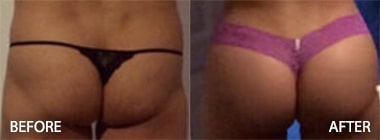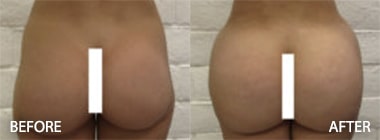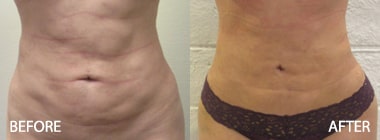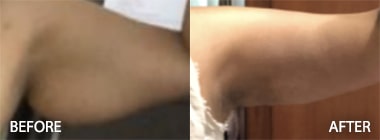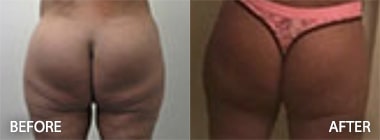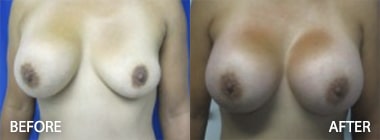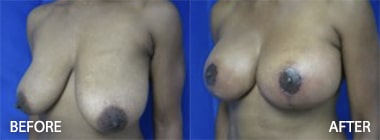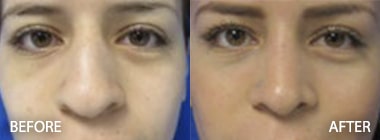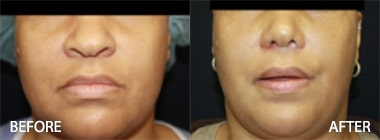Previous surgery compounds the risks for complications for expert revision plastic surgeons like Dr. Kenneth Hughes. It is important to understand that not every plastic surgeon’s practice is the same. Statistically, the average plastic surgeon will perform about 4 plastic surgeons a week or fewer. Most perform less than 200 surgeries a year. Primary breast augmentation, primary tummy tuck, primary liposuction, primary mommy makeover, and rhinoplasty make up the majority of the procedures performed. Revision surgery is frequently less than 15% of a plastic surgeon’s practice. What does this mean? Most plastic surgeons only perform a handful of reconstructive and revision surgeries each year. These complex revision surgeries are infinitely more difficult surgeries. The reality is that Dr. Kenneth Hughes performs at least 10 times as many complex revision surgeries as does the average plastic surgeon each year as borne out by the above statistics.
Because this analysis of plastic surgery procedures can be hyper technical it is better probably to give some examples of patients who may fall into certain categories so that people can understand what Dr. Kenneth Hughes may confront on a daily basis. Let us say that you are starting with a breast augmentation patient. This patient is relatively young and has no medical problems has never had breast surgery before has relatively symmetric anatomy and once a relatively small to moderate sized implant. This surgery almost 100% of the time will result in a nice outcome without any complications. This patient vignette is a totally different scenario than a patient who has had five breast augmentations with four capsular contracture outcomes despite anterior and posterior capsulectomies for treatment, the placement of the dermal matrix, as well as gummy bear implants to reduce the risk as much as possible.
This is in addition to the standard precautions of submuscular placement of breast implant with antibiotic irrigation use during the surgery and things of that nature. The real issue in the second surgery is that the patient is not at the same risk for complications as the first patient. The second patient has a much higher rate for recurrent capsular contracture. In addition, this patient frequently has visibility and rippling of implants with thinning of tissue and decreased or marginalized blood supply from multiple surgeries as well as the tissue expansion occurring naturally overtime from implants. In addition, the scar tissue and apparent deformities will be harder to fix in this patient due to the contraction of the skin envelope, the development of scar tissue, and all of the soft tissue and coverage concerns. How does one quantify the level of difficulty on the first patient versus the second patient? The first patient on a scale of 1 to 10 is probably 1 and the second patient on the scale of 1 to 10 is probably around 5.
If a complicated breast augmentation revision surgery only rates a 5, what would be considered a 10? The truth of the matter is is that very few breast surgeries are so complicated that they would be considered more difficult than any other surgery. The truth of the matter is that certain surgeries are much more difficult in their approach and the ability of the surgeon to manipulate the outcome in the most appropriate way. For instance, liposuction revision is notoriously difficult. Although the actual instrument and the movement of the instrument back-and-forth in liposuction appears easy, the curiously easy and seemingly monotonous back and forth movement of liposuction belies the inherent complexity.
The real talent of the liposuction practitioner involves the precise maintenance of the cannula track to optimize fat removal and uniformity of flap resection. Remember that liposuction is a blind procedure and liposuction relies upon an intact abdominal wall. Similarly, the same precision is imperative for prevention of dents, divots, uneven resection, abdominal wall perforation, skin death, etc. Let us delineate a third patient scenario as a potential liposuction candidate. This patient has probably 3 to 4 L of fat and has had two pregnancies and a C-section. Her skin is not as taught and tight like someone who has not had pregnancy or someone who genetically has good skin. However, the patient does not have extremely saggy skin. But, with the removal of 3 to 4 L of fat, that skin envelope will of course deflate the skin envelope further. Liposuction never improves the skin; it always makes the skin worse.
The genius of performing liposuction is removing fat at multiple depths to assure uniformity at multiple levels and across the entire surface area of the surgery. In addition, the surgeon has to be able to manipulate tissue as patients are inherently uneven in certain areas of fat thickness and skin laxity. The description or the understanding of this belies simple description and cannot be communicated except in the most simplistic of ways. So this patient with will call somewhat loose skin a large amount of subcutaneous fat a previous C-section which generates scar tissue in the plane of the surgery would probably be a three or four on the scale of liposuction patients.
Now let us go to patient 4 and give you an idea of who would be the difficulty of level 10. Dr. Kenneth Hughes gets many of these people because these patients have lost all hope and other surgeons simply tell them there is nothing that can be done. The problem with that is patient patients all over the world have been performed due to trauma a previous surgery or some type of birth defect or developmental abnormality and they do not want to live a life where they look in the mirror and are disgusted by what they see. The way they look in the mirror is absolutely integral to mental health and leading a productive life. To dismiss these types of surgeries as cosmetic is to be a true fool. Dr. Hughes may see patients that are more difficult than anyone else. With more difficult patients you can guarantee that there will be a higher risk for complications and there will be less certainty about results as well as less certainty about whether certain healing parameters can be met. Patient number four comes to the office after three previous liposuctions, a tummy tuck, tummy tuck revision with umbilical reconstruction, areas of previous burn from energy-based liposuction techniques and irregularity and deformity of the entire abdomen.
In addition, this patient has had previous hernia repair and is always at risk for hernia recurrence. What is the operative approach for this type of patient? First, this patient is queried about and examined for hernias. This patient could have a hernia anywhere. The patient could have an incisional or ventral hernia. In addition, the abdominal wall may have an overall weakness due to massive weight gain or pregnancy. Thus, all liposuction and liposuction revision patients must have an intact abdominal wall and intact fascia to perform safely.
Even if a person has had hernia repair and there are no hernias present on physical exam or even after CT or MRI, the patient should realize that there are many small hernias that cannot be picked up on CT or MRI but can still allow admittance of the cannula. So these patients who are revisions with multiple previous incisions and multiple previous poor liposuction results have a very very unfriendly internal environment where it is essentially a minefield that the plastic surgeon must navigate. Once again no matter how how gifted a surgeon is, a surgeon is not going to avoid every complication. This applies to liposuction related cases as well such as Brazilian buttlifts or BBLs and revisions of those surgeries.
Dr. Kenneth Hughes uses a technique in liposuction where he literally lifts the skin and fat off the abdominal wall to allow him to insert the cannula and perform liposuction well above the abdominal wall and rib cage. This is a critical component for avoiding lung puncture, liver puncture, intestinal puncture, and even kidney puncture on the back. Patients must understand that the risk for a complication in these very unfavorable revision liposuction cases is at least 10 times higher than in a primary liposuction patient with no previous surgeries or medical problems or hernias.
So then the question becomes why would you even do the surgeries if the risk is higher? The main issue in that is to determine the relative risk of patient harm versus the relative risk of patient harm should they continue their lives with these deformities. In an extremely deformed patient where Dr. Hughes feels that he can make a significant improvement and improve quality of life, he explains all of these potential eventualities with complications. Dr. Kenneth Hughes will do the best job of avoiding those complications but the risk is certainly not zero. Dr. Kenneth Hughes has performed thousands of these very difficult liposuction revision surgeries over the years and has given life back to thousands of people. So when you evaluate a surgeon, a surgeon who has performed thousands of difficult liposuction revisions should not confused with the average surgeon who has performed a few hundred primary liposuction cases. This one of the clearest examples of an apples to oranges comparison.
It is sometimes very difficult for patients to know what types of surgeries a surgeon is doing and the relative level of difficulty. However, looking at some of the YouTube videos can give some insight into how truly complicated the surgeries are. They are complicated from an evaluation standpoint, from an intellectual standpoint, from a technical standpoint, and from a recovery standpoint as well as a complication standpoint. All of these risks and benefits have to be weighed accordingly to determine if this patient is a suitable candidate for that plastic surgical procedure. There are no easy determinations to be made in these high stakes and complicated plastic surgery scenarios. The decision to move forward with the plastic surgical procedure results from the collaboration of both plastic surgeon and patient.
